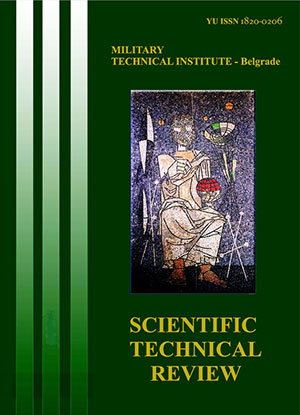|
ISSN: 1820-0206 First published in 1950
|
doi:10.5937/str2500001K Vol. 75, No.1(2025), Pages: 3-10 Impressum Contents
Evaluating the Effectiveness of Different Sample Preparation Routes for Organic Components Quantification in Gunpowder and Double-Base Rocket Propellants for HPLC Analysis
Monitoring the chemical stability of gunpowder and double-base rocket propellants is a crucial aspect of quality control for stored ammunition. This intricate undertaking seeks to guarantee the accuracy of ammunition at a satisfactory level, encompassing both its practical functionality and safety considerations. The primary reason for monitoring chemical stability is the presence of nitrocellulose (NC) as the basic energetic component in gunpowder and double-base rocket propellants. This particular form of ammunition, known as NC ammo, undergoes a slow process of degradation over time. It is important to note that even when exposed to normal environmental conditions, it has the potential to ignite spontaneously. This reaction is inherently spontaneous and irreversible, however, it can be slowed down by introducing a small quantity of organic or inorganic substances known as stabilizers. Over time, the stabilizer is gradually consumed, and accurately measuring its quantity is essential for evaluating chemical stability. Aside from stabilizers, additional organic additives are used in nitrocellulose-base energetic materials to enhance performance or streamline the production process. Identification and quantification of organic components are also important from the aspect of analyzing unknown samples. The high-performance liquid chromatography (HPLC) method can be used to determine the content of certain organic compounds. The sample preparation for quantifying the organic compound content relies on the specific type of energetic material being examined, following the standard protocols outlined in the HPLC method. The technique of sample preparation, the equipment needed in the laboratory, and the amount of time required to get accurate and repeatable results are all directly impacted by the solvent selection. This research provides a comparison of sample preparation performances using two different solvents (dichloromethane and acetonitrile) indicating the advantages and disadvantages of both preparation techniques.
|
|
Copyright ©, Vojnotehnički institut, 2007. - www.vti.mod.gov.rs |
|
